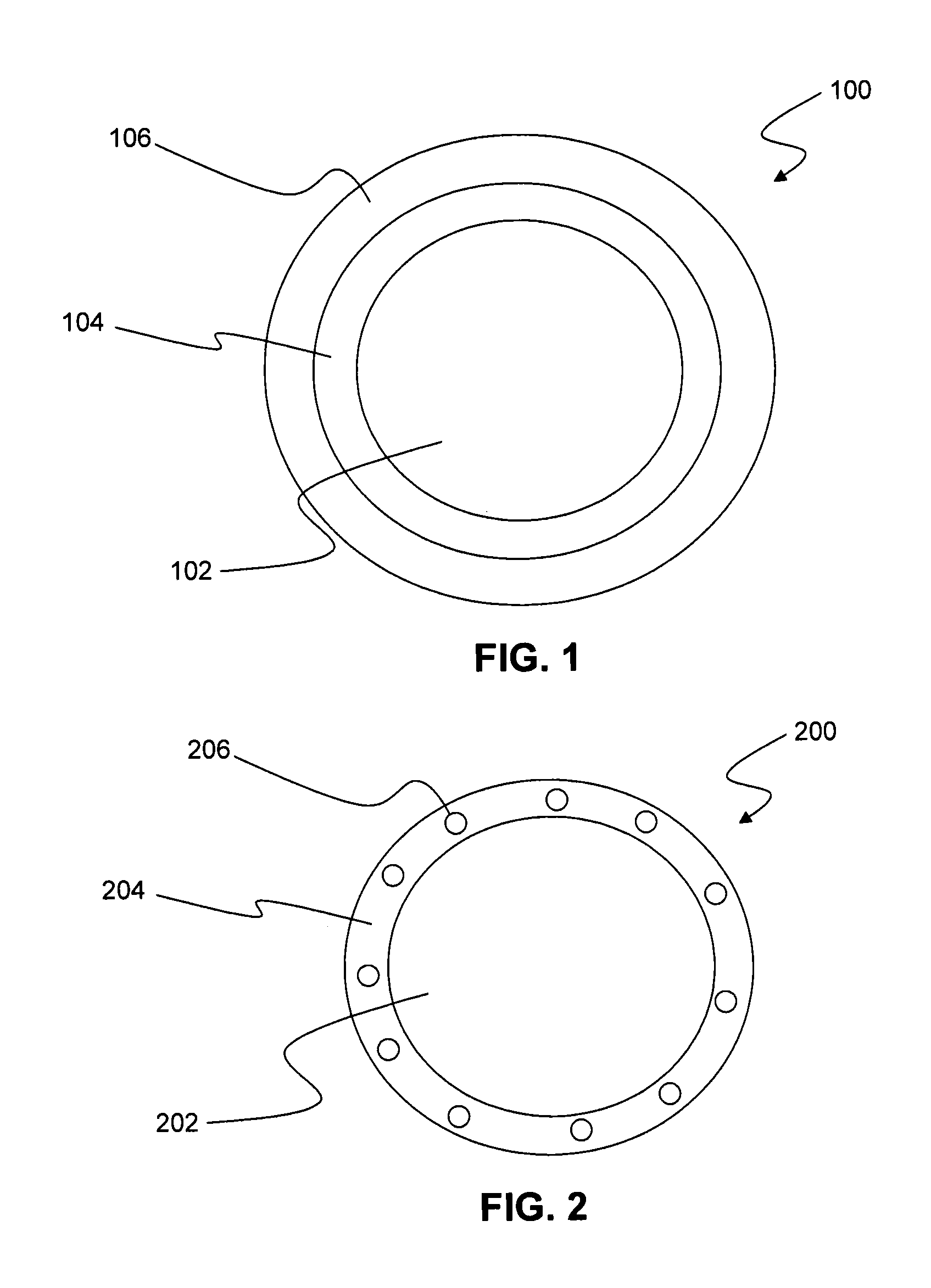Fertilizer composition containing micronutrients and methods of making same
- Summary
- Abstract
- Description
- Claims
- Application Information
AI Technical Summary
Benefits of technology
Problems solved by technology
Method used
Image
Examples
example 2
K-Mag (K2Mg2(SO4)3) Coating
[0029]Uncoated MAP was completely coated with powdered K-Mag blended with half its weight of diluted calcium lignosulfonate solution (diluted to 70 / 30 w / w CLS / H2O with CLS comprising 58% solids). The slurry was evenly spread over the tumbling bed of MAP granules and heated to dryness. The coated granules were spray-coated with hot PEI (99%) and subsequently coated with zinc in the form of ZnSO4.H2O. The complex was then formed by spraying with a small amount (approximately 0.25%) of acidic water (pH adjusted to approximately 2 with citric acid). The coated granules were then air-dried. Talc (approximately 1%) was added to yield free-flowing granules.
example 3
Ammonium Sulfate ((NH4)2SO4) Coating
[0030]Uncoated MAP was completely coated with powdered ammonium sulfate blend with an equal weight of diluted calcium lignosulfonate solution (diluted to 70 / 30 w / w CLS / H2O with CLS comprising 58% solids) to form a flowable slurry. The slurry was evenly spread over the tumbling bed of MAP granules and heated to dryness. The coated granules were spray-coated with hot PEI (99%) and subsequently coated with zinc in the form of ZnSO4.H2O. The complex was then formed by spraying with a small amount (approximately 0.25%) of acidic water (pH adjusted to approximately 2 with citric acid). The coated granules were then air-dried. Talc (approximately 1%) was added to yield free-flowing granules.
example 4
Potassium Sulfate (K2SO4) Coating
[0031]Uncoated MAP was completely coated with powdered ammonium sulfate blend with half its weight of diluted calcium lignosulfonate solution (diluted to 70 / 30 w / w CLS / H2O with CLS comprising 58% solids) to form a flowable slurry. The slurry was evenly spread over the tumbling bed of MAP granules and heated to dryness. The coated granules were spray-coated with hot PEI (99%) and subsequently coated with zinc in the form of ZnSO4.H2O. The complex was then formed by spraying with a small amount (approximately 0.25%) of acidic water (pH adjusted to approximately 2 with citric acid). The coated granules were then air-dried. Talc (approximately 1%) was added to yield free-flowing granules.
[0032]As shown in the graph in FIG. 3, the coated fertilizer composition using K-Mag as the barrier coat material (Example 2) resulted in the highest % dissolution of the micronutrient after eight hours. All the proposed examples resulted in significantly higher % dissol...
PUM
 Login to View More
Login to View More Abstract
Description
Claims
Application Information
 Login to View More
Login to View More - R&D
- Intellectual Property
- Life Sciences
- Materials
- Tech Scout
- Unparalleled Data Quality
- Higher Quality Content
- 60% Fewer Hallucinations
Browse by: Latest US Patents, China's latest patents, Technical Efficacy Thesaurus, Application Domain, Technology Topic, Popular Technical Reports.
© 2025 PatSnap. All rights reserved.Legal|Privacy policy|Modern Slavery Act Transparency Statement|Sitemap|About US| Contact US: help@patsnap.com



